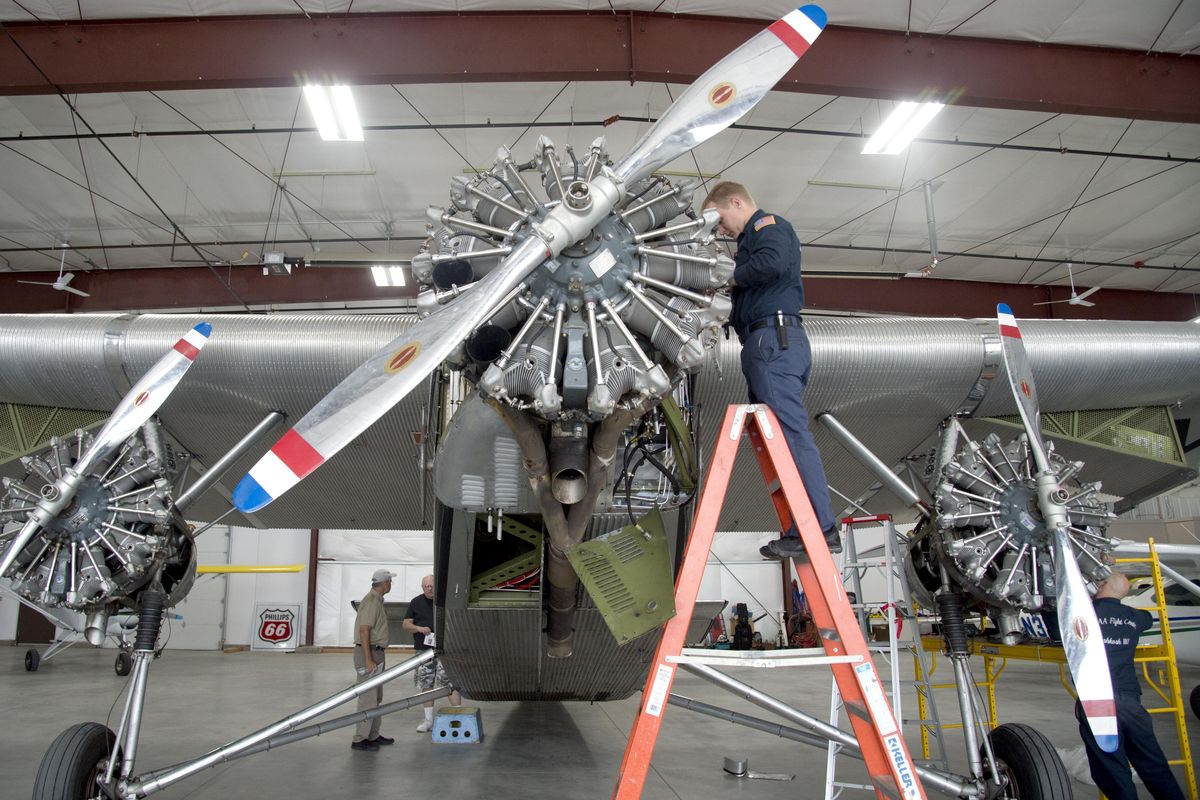Historic Ford Tri-Motor airplane lands in Spokane, will be visible in the skies this weekend

At age 90, Don Moore got a chance to relive the thrill of his childhood Thursday during a visit to Felts Field.
When he was 11, his father let him spend 50 cents that he had earned to take a short excursion flight aboard a Ford Tri-Motor airliner in South Bend, Indiana.
That was in 1937.
“When I walked up to it, it really looked big,” he reminisced Thursday afternoon.
He said that when he climbed into the passenger cabin that day, the interior seemed long and narrow.
But the takeoff sent him into another place.
“We started going faster than I’d ever gone in my life,” he said of that first flight. “I remember looking out the windows and seeing what was below me.”
After learning that another Ford Tri-Motor was due in Spokane this week, he said, “I’ve got to go and see it.”
But the visiting 1928 model was undergoing a routine maintenance inspection at a hangar two doors down, out of sight of the public.
Pilot Larry Harmacinski said it will probably be flying by Friday afternoon and for sure on Saturday and Sunday.
As a consolation, Harmacinski offered Moore and a handful of others a special hangar tour while mechanics did their work.
“This is even larger than what I remembered,” Moore said as he walked around the airplane. He climbed aboard and said he was surprised by the tiny cockpit.
The Ford Tri-Motor was the first mass-produced airliner in the U.S.
The 5-AT-B model in Spokane was used to inaugurate the first cross-country journey that combined overnight train travel with daytime flights by the Transcontinental Air Transport Co.
The journey took 48 hours and involved airplane refueling every two to three hours, including a stop in Wichita, Harmacinski said.
The plane was named the City of Wichita in honor of that stop on the route.
A few years later, the cross-continent journey was all by air with no overnight train travel, and the City of Wichita flew on that route.
The aircraft was luxurious in its day, with leather seats, art deco seat lamps, leg room and picture windows with curtains.
The plane is named for its two prop engines on the wings and one on the nose. It features a corrugated aluminum body and was known in the day as the “Tin Goose.”
It was fully restored by William F. Harrah, of Harrah’s Club in Reno, Nevada, starting in 1964.
The Experimental Aircraft Association, with a chapter in Spokane, is hosting the City of Wichita here. The EAA is leasing the plane from the Liberty Aviation Museum in Port Clinton, Ohio.
The EAA earlier said the plane would be flying at Felts Field on Thursday, but the inspection delayed flight plans, Harmacinski said.